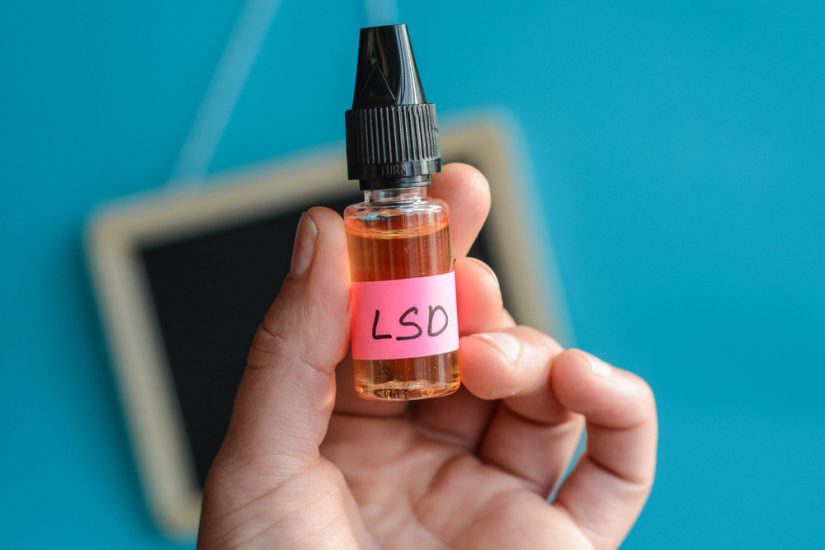- February 11, 2025
- by Shalini Murmu
- Addiction
If you’ve ever experienced the crushing burden of addiction bearing down like an unyielding force, or if you’ve witnessed someone dear to you descend deeper into the clutches of substances that claim to offer relief but result in ruin, then this message is essential for you. Xylazine is not merely another drug, it’s a chemical nightmare, a sedative intended for veterinary use that is now ravaging communities like a quiet epidemic. Initially created as a tranquilizer for large animals, Xylazine was never meant to enter the human bloodstream.
However, as with many substances in the past, dealers discovered how to exploit them, using them to dilute their fentanyl and heroin supplies, enhancing the potency of their products while boosting their profits. It began subtly, infiltrating the drug supply, and before anyone realized what was happening, they were either waking up, or failing to wake up entirely with decaying skin, relentless blackouts, and withdrawal symptoms that felt utterly torturous. Its impact is most severe in areas like Philadelphia, Puerto Rico, and beyond, spreading more rapidly than the systems established to combat it. The high lasts longer, the price is lower, and for those already grappling with opioid addiction, it becomes an inescapable snare.
Devastating Health Effects & “Zombie-Like” Symptoms
One of the most alarming features of Xylazine is the physical harm it inflicts. Users don’t merely face the anticipated lethargy or high of opioids, they encounter something much darker, something grotesquely inhuman.
- Extreme Sedation and Unconsciousness – Xylazine acts as a central nervous system depressant, which means it reduces heart rate and breathing to perilously low levels. Unlike opioids, which may still leave some cognitive awareness, Xylazine can render an individual unconscious for hours, making them vulnerable to assault, theft, or simply unable to regain consciousness at all. Individuals are often discovered slumped in public spaces, motionless, their bodies betraying them long before they comprehend the situation.
- Decaying Skin and Necrotic Lesions – What distinguishes Xylazine, what makes it truly frightening, is its capacity to cause flesh to decay. Users develop large, open wounds, often far from where they inject the drug that morphs into necrotic lesions that refuse to heal. The substance constricts blood vessels, hindering circulation to the skin and tissue. Over a period, these injuries may intensify to the point that amputation becomes the lone option. It’s a horrifying reality, a living nightmare where the very substance used to escape from pain is literally consuming you.
- Heightened Risk of Overdose – The peril associated with Xylazine lies in the fact that it is not an opioid, meaning naloxone (Narcan), the life-saving drug for reversing overdoses, is ineffective against it. When combined with fentanyl, already the most lethal drug available, the likelihood of overdose dramatically increases. Individuals are collapsing in public, their breathing slowing to a halt, and even when Narcan is administered, their bodies do not respond as they should. It’s transforming already fatal overdoses into irreversible fatalities.
- Long-Term Health Impact – Even for those who survive Xylazine use, the lasting effects are harsh. Chronic infections, organ damage, nerve deterioration, and a body that struggles to heal are just the start. The obstacles of recovery are heightened by psychological issues, including extreme anxiety, depression, and loss of cognitive function.
Why Xylazine Addiction Is Different And More Dangerous?
Xylazine represents a new level of mental and physical damage, and its rapid proliferation is due to its ability to redefine the nature of addiction itself.
- More Alarming Than Fentanyl and Heroin – While users of fentanyl and heroin often chase similar highs, Xylazine transports them to an entirely different realm. A state of profound sedation and disconnection. Unlike opioids, it obliterates awareness entirely. Individuals may not even recall their usage; they regain consciousness hours later, bewildered by what transpired, bearing fresh injuries and an unrelenting craving.
- Physical Dependence & Withdrawal – The true horror of Xylazine lies in the unique form of withdrawal it induces. While opioid withdrawal is excruciating in its own right, featuring muscle pain, vomiting, tremors, and cravings, Xylazine introduces intense agitation, panic episodes, and significant rebound hypertension. Those attempting to quit often become ensnared in withdrawal so unbearable that they resort to relapsing just to find relief.
- Lack of Treatment Protocols – In contrast to heroin or fentanyl, which have recognized medication-assisted therapies (such as Suboxone or methadone), no sanctioned treatments exist for Xylazine withdrawal. The detox process remains unpredictable, agonizing, and, in many instances, fatal. Healthcare providers are still racing to devise effective strategies for addressing this emerging crisis, leaving users stranded in a struggle against their own bodies.
There’s a harsh reality regarding addiction that many don’t comprehend until they experience it firsthand, one can desire to quit with every fiber of their being, but without the appropriate support, the withdrawal, cravings, and overall burden can drag you back down. The battle is even more severe with Xylazine. This substance doesn’t just cause addiction; it wreaks havoc on the body in ways no conventional opioid ever could. It leaves behind wounds that never heal, overdoses that Narcan can’t reverse, and withdrawal symptoms that lack any recognized medical treatment.
What’s the next step? What occurs when the drug supply is contaminated, when detox seems unachievable, and when every effort to escape addiction results in dead ends? Here’s how.
Harm Reduction Strategies and Public Health Responses
In the battle against the Xylazine crisis, frontline organizations, healthcare professionals, and addiction experts are rising to the occasion, attempting to connect survival with recovery. While some may perceive harm reduction as “enabling” substance use, the fact remains that harm reduction saves lives and for those trapped in addiction, staying alive is the initial step toward recovery.
What Frontline Organizations Are Doing to Address the Crisis?
Grassroots harm reduction organizations, detox facilities, addiction counselors, and treatment programs are adjusting their approaches to address the surge of Xylazine. There’s no straightforward medical protocol for zombie drugs, which necessitates that organizations adapt swiftly.
- Distributing Xylazine Test Strips – Much like fentanyl test strips have assisted drug users in detecting laced substances, Xylazine test strips are now being made available in certain areas to warn users of their presence. Awareness of what is in a drug supply can mean the difference between life and death.
- Supplying Wound Care Kits – As Xylazine leads to severe skin ulcers and infections, numerous organizations are offering sterile bandages, antiseptics, and wound-cleaning kits along with their standard harm reduction supplies.
- Expanding Access to Detox Facilities and Treatment Programs – Many detox centers in the country have begun to acknowledge the necessity for specialized care for Xylazine users, even though medical treatment options remain scarce. Some centers are collaborating with addiction specialists to tackle the intense withdrawal symptoms and develop more effective detox programs.
Role Of Overdose Prevention Sites and Wound Care Programs
Overdose prevention facilities (often referred to as safe consumption sites) have sparked debate for years, but the increasing incidents of Xylazine overdoses highlight their critical need. These facilities have the primary goal of saving lives.
- Supervised Use Preserves Lives – Overdose prevention facilities enable healthcare professionals to oversee drug consumption and act quickly in the event of overdoses. With the inclusion of Xylazine, where naloxone alone falls short, these facilities play an essential role in delivering oxygen support and CPR when required.
- Wound care services – Historically, drug use did not necessitate immediate medical wound care, but the emergence of Xylazine has made these services vital. Healthcare workers at these facilities assist in cleaning and dressing necrotic wounds, thereby lowering the chances of serious infections and amputations.
- Connecting Users to Addiction Treatment Centers – Many of these facilities also function as entry points to recovery, linking individuals with detox programs, substance abuse counselors, and nearby drug treatment centers that focus on overcoming addiction.
Educating Drug Users About the Risks of Xylazine-Infused Substances
One of the largest obstacles in addressing Xylazine addiction is that most of them don’t even know what they are consuming. Unlike fentanyl, which many have begun to identify and test for, Xylazine remains relatively unfamiliar and this lack of awareness contributes to its lethality.
Education is crucial. Organizations and substance abuse counselors are intensifying efforts to educate communities about:
- The signs of Xylazine overdose – Since Xylazine overdoses do not respond solely to Narcan, it is vital for individuals to understand that further interventions such as rescue breathing and oxygen therapy are necessary.
- The significance of wound care – Many users tend to neglect their wounds until it’s too late. Educational campaigns are stressing the importance of seeking timely treatment and encouraging users to access medical care before infections escalate to life-threatening levels.
NABHS – Bridging The Gap Addiction and Recovery
Numerous detox centers, sober living facilities, and drug rehab facilities are developing new detox protocols specifically designed to manage Xylazine withdrawal.
For those currently grappling with addiction, there is hope. Treatment programs are actively addressing this crisis and tailoring recovery strategies to meet individual needs. If you are seeking assistance, whether it be through a detox center, addiction counselor, or treatment program, reach out to North America Behavioral Health Services. Our certified experts will guide you to the most suitable care for your mental health needs.
Know that this battle of addiction is not yours alone. Seek help today!
Ged rid of your addictions today!
















